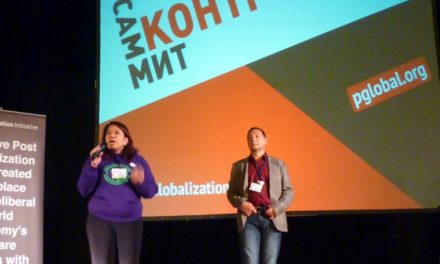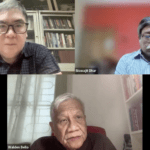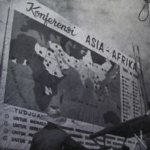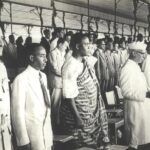[Espanõl ]
Asbjørn
Wahl*
In
spite of the neo-liberal offensive which still ravages our countries,
the movements and the left in Norway have experienced some successes
over the last years. New and untraditional alliances have been built.
New working methods have been developed. Some important victories
have been achieved. We have even been able to push the social
democratic party to the left in some important areas.
FOCUS ON TRADE
In
2005 we got rid of our most neo-liberal, right wing government ever,
and replaced it with a centre-left government, involving the Labour
Party, the Centre Party (1) and the Socialist Left Party. The
political platform of this coalition government is probably the most
progressive in Europe today (2).
Under
the current unfavourable balance of power in society, this represents
important achievements, and colleagues from other countries have
expressed great interest in the Norwegian experiences on these areas.
It can therefore be useful to take a closer look at what has taken
place, what has been achieved, and what we can learn from the
concrete experiences – be they good or bad.
THE
POLITICAL CONTEXT
When
new tendencies started to develop on the political left during the
1990s, also in Norway the political situation was characterised by
the ongoing neo-liberal offensive. Privatisation and competitive
tendering were high on the agenda. Public services were under attack.
The trade union movement was on the defensive. Deregulation and
widespread attacks on trade union and labour rights were met by
retreats, among other things by bargaining concessions and by giving
up positions at the negotiating table. A relatively de-politicised,
de-radicalised and bureaucratised labour movement was taken by
surprise by the neo-liberal offensive, and the ideology of the social
pact was not able to explain the new confrontational policies from
the capitalist forces. The result was great ideological confusion and
backlashes.
The
"reality oriented" social democratic leadership followed the
dominant political trends and adopted many of the neo-liberal ideas.
In Norway, the peak was reached when a Labour government in 2000-1
carried through some of the most extensive market reforms in modern
time, when the state telecom (Telenor) as well as the state oil
company (Statoil) were partly privatised – and the entire hospital
sector was restructured into a new market oriented model. At the same
time the Party gave way to competitive tendering of public services
at municipal level.
RE-ORIENTATION
OF THE TRADE UNION MOVEMENT
In
this situation some people in the trade union movement started to
reassess their policies. The Norwegian Union of Municipal and General
Employees and its President, Jan Davidsen, have played a decisive
role in this development – in addition to a number of local trade
union councils and branches. They acknowledged that the trade union
movement was facing a new, and defensive, situation, and discussions
started around new ways to meet and to stem the neo-liberal
offensive.
More
or less clearly expressed, new goals were identified, which can be
summarised in the following points:
–
stop the policy of privatisation.
–
change public opinion.
–
shift the political hegemony to the left.
–
push the social democratic party to the left.
–
create a centre-left majority alliance in Parliament.
–
change power relations in society.
In
other words, it was no longer only a question of a narrowly focused
trade union struggle, but a more comprehensive project of changing
society. Not least the move to the right of the social democratic
party made it necessary for the trade union movement to take on a
broader political responsibility. The situation required renewal –
organisationally as well as politically.
Different
currents and initiatives on the left in the Norwegian trade union
movement, as well as in allied movements, have in many ways followed
this path and, assessed retrospectively, we can identify four main
pillars which have contributed to the positive results:
1.
Focus on our own analyses – our comprehension of current
developments.
2.
The building of new, broad and untraditional alliances.
3.
The development of concrete alternatives to privatisation and
marketisation.
4.
The development of trade unions as independent political actors.
In
the following, I will describe each of these four pillars and examine
what has been achieved as a result of this reorientation of parts
(still a minority) of the trade union movement – as well as among
allied forces and movements.
OUR
OWN ANALYSES
A
thorough analysis of current economic and social relations is
important, since it is decisive for the development of strategies and
alternatives. Therefore we have developed analytical documents,
organised widespread general education projects to spread knowledge
of what the global, neo-liberal offensive really is about. The
question of social power has been focused, and it has been stressed
that behind the apparently neutral notion of globalisation, an
enormous interest-based struggle is going on. In the current
situation this struggle, through deregulation, privatisation and
market orientation, is undermining democracy and leading to an
enormous shift in the balance of power in society.
Of
course, there have also been internal political and ideological
struggles on this – inside the trade union movement as well as on
the political left. The neo-liberal account of globalisation as a
necessary and unchangeable process, most strongly expressed through
Margaret Thatcher's "there is no alternative" (TINA), gained a
foothold also in great parts of the trade union movement as well as
in traditional political parties of the left. Globalisation has come
to stay became an often expressed statement, and the trade union
movement would have to accept this fact and adapt to it. Increased
competitiveness thus became the most important way to secure jobs.
Policies of privatisation in the same way were interpreted as a
necessary modernisation of an old-fashioned and bureaucratised public
sector.
This
apprehension was rejected by the municipal workers' union and many
of the other alliances and initiatives which developed. Through the
production of small booklets, the organisation of our own
conferences, participation at countless meetings and arrangements in
other organisations, as well as in the general public debate, we in
the Campaign for the Welfare State alliance (see below) painted
another picture, focusing on the question of social power, resistance
and alternatives.
BROAD
SOCIAL ALLIANCES
The
comprehensive change of power relations in society also led to the
realisation that it was necessary to build new, broad and strong
alliances – inside the trade union movement as well as between
trade unions and other organisations and movements. The Campaign for
the Welfare State3 was one of the results of this reorientation, when
six national trade unions in the public sector, inside and outside
the dominant Norwegian Confederation of Trade Unions, in 1999 joined
forces to fight the on-going attacks on public services (4). The
Norwegian Union of Municipal and General Employees was the initiator,
and the six unions were later on followed by another nine – most of
them from the private sector – as well as a farmers' union, a
national association of retired persons, women, student and user
organisations. At its height this alliance united 29 national
organisations which together represented more than one million
members (and that is not bad in a country with about 4.5 million
inhabitants).
Alliances
were built in other areas as well. As the financial situation of the
municipalities became more and more constrained as an effect of a
comprehensive redistribution of wealth from the public to the private
sector during the 1990s (5), widespread discontent developed among
local politicians. Petitions from an increasing number of mayors and
protest meetings were repeatedly organised against the annual state
budgets. In the Campaign for the Welfare State we considered the
situation to be ripe for a more extensive organisation of the
opposition. In 2002 we, together with a number of mayors and local
popular movements6, therefore took the initiative to organise the
Popular Movement for Public Services. A co-ordinating committee was
set up, including representatives from all the groups involved.
Within one year 90 of the about 430 municipalities in Norway had
joined the action. This was the first time that municipalities had
organised in an action outside the formal structures (The Norwegian
Association of Local and Regional Authorities is their professional
body), and it contributed strongly to increasing the pressure on the
national government and parliament.
Before
the fifth Ministerial of the World Trade Organisation in Hong Kong in
December 2005, a new initiative was taken by the Campaign for the
Welfare State to establish a broad alliance of organisations with
more than 800,000 members, in support of a statement which demanded a
break with neo-liberal trade policies. Trade unions and farmers'
organisations bore the brunt. This was later on followed up through
the establishment of the Norwegian Trade Campaign network. Many of
the same driving forces were some few years earlier involved in the
setting up of Norway Social Forum – as the Norwegian part of the
new global justice and solidarity movement against neo-liberalism and
war. Through these alliances processes were developed which further
radicalised participants.
The
initiative to create a parliamentary alliance between the Labour
Party, the Centre Party and the Socialist Left Party was also taken
in these surroundings. Until as late as one year before the
parliamentary elections in 2005, the Labour leadership rejected the
entire possibility of forming a coalition government together with
the Socialist Left Party. It was the trade union movement which
pushed this through, not least because, as time went by, also the
national confederation of trade unions threw its strength into the
project. In 2001 a majority at the trade union congress decided to
support financially not only the Labour Party, but also for the first
time in history the Socialist Left Party – against the
recommendation of the Executive Board. At the next congress, four
years later, even the leadership had changed its political position
on this question, and the leader of the Socialist Left Party was
invited to speak to the congress. The municipal workers' union
started to hold contact meetings both with the Socialist Left Party
and the Centre Party, in addition to the Labour Party. Together with
increasing scores for the Socialist Left Party in opinion polls at
that time, this created strong pressure on the Labour Party
leadership.
In
Oslo another alliance was created before the 2005 parliamentary
elections – focusing on the need for a new political course7. A
wide variety of organisations took part: the local trade union
council, Attac Norway, the Campaign for the Welfare State, the
Norwegian Council for Africa, the Committee for Solidarity with
Latin-America, the youth organisation of Save the Children and
another couple of local trade unions. Under the umbrella of Oslo2005
these organisations joined forces in demanding a break with the
neo-liberal policies which had been pursued by all governments,
irrespective of right or left, over the last 20-25 years. No
particular political party was focused, but the necessity of a new
political course.
OUR
ALTERNATIVES
When
the attacks on public services started in the 1980s, neo-liberal
politicians exploited the discontent which already was prevalent with
existing public services, linked to bureaucratisation, low quality or
limited accessibility. For those of us who wanted to defend the many
gains which were won through the welfare state, it was important to
admit these weaknesses, to fight for improved services, but without
giving way to the neo-liberal reforms.
This
was solved by a principle stand against privatisation and competitive
tendering, while at the same time we said yes to reorganisation and
development of public services on our own premises – and within the
public sector. In the political climate which existed at that time,
this was not an easy position to carry forward. Market solutions were
in, and competitive tendering had come to stay, we were told. As a
trade union we should rather focus on securing wages and working
conditions, as well as trade union rights, within the tendering
system, we were advised, including from strong currents inside the
trade union leadership and the Labour Party. We rejected this
position. Our view was that it was deregulation and privatisation
itself that posed the threat; which undermined working conditions.
This clear principal stand led to the situation that our union as
well as its president, over a long period of time, were
systematically abused in editorials in dominant newspapers.
However,
the union did not limit itself to this defensive struggle. It also
took the initiative to a more offensive effort – through the
so-called Model Municipality Project. The union entered into
three-yearly agreements with a number of municipalities with
sympathetic, political majorities. The aim was to mobilise the
employees to further develop and improve the quality of the public
services – under the following three preconditions: no
privatisation, no competitive tendering or no dismissals should take
place.
The
project was based on a bottom-up process, where the experiences, the
competence and the qualifications of the employees should form the
basis, together with the experiences and needs of the users of the
services. Two independent research institutions followed the first
model municipality (Sørum) and concluded as follows: the
project had led to higher user satisfaction, better working
conditions for the employees and better financial situation for the
municipality – a win-win-win situation8. More than anything else,
this proved that the policy of privatisation not primarily was about
improving public services, it was a political-ideological struggle to
change society in the interest of market forces.
The
new centre-left government, which won power in 2005, has now adopted
the Model Municipality Project as government policy, by launching in
the autumn of 2006 the so-called Quality Municipality Project.
Indeed, it represents a modified version of the Model Municipality
Project, but the aim is to increase the quality of local public
services and strengthen local democracy – without privatisation and
competitive tendering. This was an important victory for the fight
against privatisation.
A
MORE POLITICALLY INDEPENDENT TRADE UNION MOVEMENT
Finally
we have the example of Trondheim, which inspired us greatly in the
struggle against neo-liberalism in Norway. Before the local elections
in 2003, the trade union council of Trondheim, together with its
allied partners, broke with an old trade union tradition. Usually
trade unions' role during election campaigns have been to support
political parties on the left (most often the Labour Party), and the
political programmes on which they campaigned.
Before
the 2003 elections the local trade union council turned into an
important political actor itself. Through a comprehensive, democratic
process, 19 concrete demands were developed on how Trondheim should
be governed the coming four years. The demands were sent to all
political parties – with the following message: we will support
those parties which support our demands. This had a strong
educational effect on a number of the political parties – not least
the Labour Party, which hardly could stand to loose the support from
the trade union movement.
The
new initiative in Trondheim received positive answers from the Labour
Party, the Socialist Left Party, The Red Electoral Alliance, The
Greens, the Pensioners' Party and a local list. The Centre Party
supported about half of the demands, and it was kindly included as a
supportive party. Subsequently, the trade union alliance urged its
members and the voters to vote for one of these parties, at the same
time as it continued to campaign for its own political platform (the
19 demands). The traditional financial support from the trade union
council to the Labour Party was cancelled this year, since the
resources rather were used for its own campaign.
Thus,
a more politicised trade union movement was decisive in revealing the
real political contradictions in society, as well as pushing the
Labour Party and other, smaller parties, to the left. The
Conservative Party, which had dominated this third biggest city in
Norway the last 14 years, became the main looser in the election. The
trade union initiated political alliance won a clear victory, with
mot than 60% of the votes. The three parties linked to the labour
movement, the Labour Party, the Socialist Left Party and the Red
Electoral Alliance alone achieved a majority of the votes (51%).
Those three, together with The Greens, and with solid representation
from the trade union movement, worked together to develop a joint
political platform for the new majority. They were later also joined
by the Centre Party, on a platform which included most of the 19
demands from the trade union alliance.
The
political platform of the new majority was not only about abolishing
the policy of privatisation, but also about taking back into public
sector services which had already been privatised. So far, the result
of this has been that two nursing homes and half of the refuse
collection services in Trondheim, which had been privatised through
tendering under the previous, conservative majority, now have been
taken back to the public sector. The same has happened with the
maintenance of public buildings. Social benefits have been increased,
the public transport fares have been reduced and an extensive
maintenance and new construction programme of public schools has been
introduced. Through an agreement with the municipal workers' trade
unions, Trondheim has moreover joined the growing number of model
municipalities.
Before
the parliamentary election in 2005, the Norwegian Confederation of
Trade Unions (LO is the Norwegian abbreviation) partly followed up
this model. A comprehensive project, "You decide – LO on your
side", was developed in order to collect the demands and priorities
of the members. 155,000 proposals from 44,000 members were received.
54 concrete demands were identified and sent to all political
parties. Their answers were collected and sent to all 800,000 members
at the same time as LO, through the long electoral campaign9,
mobilised for a new political course, including majority for a
coalition government consisting of the three parties; The Labour
Party, the Socialist Left Party and the Centre Party – which also
won majority.
SO
WHAT HAVE WE ACHIEVED?
Alliance
building, new social movements and more politicised trade unions
represent the new developments which have contributed most to the
important changes on the left in Norway over the last few years, and
which has given us some important political victories. We have been
able to change public opinion, from a situation in which about half
the population was in favour of privatisation in the middle of the
1990s, till almost 70% were against in opinion polls before the
elections in 2005. This contributed strongly to moving also the
Labour Party from a pro- to an anti-privatisation platform in the
same period.
We
have increasingly been able to expose the real contradictions in
society and to sharpen the political/ideological debate – even to
the degree that, when the Conservative Party were to proclaim its
main opponent in the local elections in 2003, it pointed to the
Norwegian Union of Municipal and General Employees, which obviously
did not stand for election, but which the party anyway saw as the
main barrier against its neo-liberal offensive, and correctly so. It
was a brilliant situation for the trade union, of course, which by
this even to a greater extend than before could define the premises
for the political debate.
Both
in the Trondheim example and in the parliamentary elections in 2005
we experienced stronger than usual political polarisation between the
right and the left. These experiences have in practice confirmed that
it is when the political alternatives stand clearly against each
other, when the real contradictions in society are exposed, that the
left can most successfully mobilise. The simplistic comprehension
that if the voters move to the right, the left parties have to go to
the right as well in order to catch the middle-voters, has once again
proved wrong. Political movements are not linear – it is rather a
question of conflicting interests, as well as political-ideological
confusion or clarity.
Over
the last few years, by means of our alliances, our politisation of
trade unions and our alternatives, we have been able to slow down,
and partly stop, the policy of privatisation and to get rid of the
most right wing, neo-liberal government we have ever had in Norway.
It was replaced by a centre-left government after the elections in
2005, where all the three political parties had to campaign on an
anti-privatisation platform, not least because we had succeeded in
changing public opinion, heavily supported by the fact that
privatisation was no longer only theoretical promises, but concrete
experiences, which did anything but meet the rosy expectations which
were created by the neo-liberal pundits.
It
was important also, of cause, that the Labour Party experienced a
formidable electoral defeat in 2001, when it was punished by the
voters for its neo-liberal excesses in the previous period. The
party's score was reduced from 36 (in 1997) to 24 per cent, the
lowest ever since the beginning of the 1920s. The demand for a new
political course therefore also received strong support from great
parts of the party's own rank and file. By moving politically to
the left in the 2005 elections, the party recovered many of its
voters.
The
political platform of the three-party coalition government was in
many areas surprisingly radical in its contents10. The government's
morning gift to its people consisted in the redemption of a number of
the most important demands which were raised by the trade union and
other movements. The privatisation of the railways was stopped. The
full opening for private primary and secondary schools was stopped
(11). The destruction of the labour laws, which was carried through
by the previous government, was reversed. Billions of fresh money has
been put into the municipalities, which carry out most of the public
services. Demands on a number of developing countries to liberalise
their services sectors through the WTO GATS agreement were withdrawn.
And Norwegian soldiers were withdrawn from Iraq.
NEW
POLITICAL COURSE?
After
this morning gift, however, it has, with some few exceptions, been
difficult to catch sight of the new progressive political course in
Norway. It seems as if the Labour Party's right wing has taken the
offensive, while the Socialist Left Party shows all its weaknesses –
among them a lack of insight into basic power structures in society.
Even if they pretend to be a left socialist party, they obviously do
not have any well developed strategy for their participation in
government. The matters in which the party has chosen to take
internal conflicts in the coalition government so far have turned on
foreign policy and environmental questions, while the social struggle
is more or less absent as a subject, in spite of the fact that the
poverty gap is still growing – and social dumping and anti-trade
union policies are on the increase. This lack of roots in the social
movements and in the social struggle is the main weakness of this
political party. The building of alliances with social movements
outside the parliament is therefore also non-existent. They rather
encourage people to stay calm, "so that we can carry out our
policies".
Even
if the centre-left government is still able to carry through
progressive decisions, like the cancelling of debt to some developing
countries, or the recognition of the new Palestinian government, it
seems as if the limit is where it will have to confront strong
economic interests. Structural reforms, which can contribute to
shifting the balance of power in society, are therefore completely
missing. On the contrary, the government is currently pushing through
a pension reform which will weaken the existing, redistributive
pension scheme. It has also proposed a regional reform, in which it
fails to take the opportunity to structurally strengthen and
consolidate local democracy.
For
quite many of us, it was clear from the outset that the new
centre-left government would only represent an opportunity, but real
developments would depend on a strong and continuous pressure from
outside the parliament. There are many reasons for this. Firstly, a
lot of power has been transferred from democratic bodies to the
market in the neo-liberal era. Secondly, the political space has also
been reduced through a number of international agreements over the
last 10-15 years, where the EEA12 and the WTO agreements are the most
important ones. Thirdly, the pressure from the political right and
capitalist interests is strong, and the government gives way.
Fourthly, the right wing still hold the most important positions in
the Labour Party, while the Socialist Left Party neither has the
strategic perspective, nor the social roots which are necessary to
pose an alternative stronghold on the left.
The
party political misery on the left has in other words not been
overcome. Neither have the radical parts of the trade union movement
nor other social movements proved to be strong enough to maintain
sufficient pressure on a government which many consider to be their
own, and where, although weakened, loyalties still dampen the ability
as well as the willingness to take actions from below. The
implementation of a new more left-oriented political course will,
however, completely depend on such a pressure in the current
political situation.
So
far it is therefore the right wing populist party (The Progress
Party) which has been the big winner in the opinion polls since the
centre-left government took office in Norway. Neo-liberalism creates
a real basis for anxiety, discontent and contradictions in society.
The right wing populists have specialised in exploiting all such
discontents – and in channelling it in perverted political
directions (against immigrants, against single mothers, against
people on social benefits, against ‘politicians', etc.). The only
way to challenge this situation is through policies from the left
parties which take people's discontent seriously, politicises it
and channels it into a social struggle for collective solutions.
THE
STRUGGLE CONTINUES!
The
next parliamentary election in Norway will be in 2009. The following
could be the most extreme alternative developments up to these
elections:
Worst
case scenario: The centre-left government has not delivered or lived
up to its expectations. The enthusiasm in the movements which brought
the coalition government to power, is dead. The Campaign for the
Welfare State and the other alliances have been demobilised. The
conservative party together with the right wing populist party win
power.
Best
case scenario: The government has delivered. It has introduced a real
new progressive political course and created enthusiasm in those
movements which brought it to power. The Campaign for the Welfare
State and the other alliances have been strengthened, and the
centre-left government wins a new mandate period for a new political
course.
It
is too early too conclude which of these main tendencies we will end
up with. What is clear, however, is that the present government has
problems with delivering according to the expectations it created. It
looks as if most of the government defines a new political course,
not as a comprehensive new approach to politics, but as a list of
single issues which will be implemented (if possible?), while
politics at large will continue as before – along a soft,
neo-liberal path.
Irrespective
of these developments, the most important experiences from the last
few years' political fighting in Norway are the new alliances which
have been created and the political independence which has developed
in important parts of the trade union movement as well as in allied
movements13. It is these developments which have led to the victories
we have won. It is here we can find the most important and positive
parts of the Norwegian Method. It is here the potential can be found
to further change power relations in society. The struggle continues!
*
Asbjorn Wahl is the National Co-ordinator of the Campaign for the
Welfare State
NOTES:
1.
The Centre Party is a peasants' or a rural party, which has been
radicalised by being one of the leading forces in the successful
campaigns against Norwegian membership of the European Union (in 1972
and 1994).
2.
The real experiences with this government, however, are rather mixed.
Since this is not the subject of this article, those who are
interested in our experiences with the centre-left government, can
see an early analysis of this in my article "Left Parties in
Government: The Norwegian Case ":
3.
See www.velferdsstaten.no. The author of this article has been the
national co-ordinator of this alliance ever since the beginning.
4.
In addition to the Norwegian Union of Municipal and General
Employees, the following unions took part: Norwegian Civil Service
Union, Norwegian Union of Social Educators and Social Workers,
Norwegian Union of Teachers, Norwegian Nurses Association and
Norwegian Association of Health and Social Care Personnel. The three
first mentioned were affiliates of the Norwegian Confederation of
Trade Unions. The nurses' union was affiliated to the Confederation
of Academic and Professional Unions, while the teachers' union was
not affiliated to any confederation. The last mentioned union was
affiliated to the Confederation of Vocational Unions, but it has
later on merged with the municipal workers' union.
5.
The public sector share of the Gross National Product was reduced
from 52 to 43 per cent from 1992 to 1998 in Norway.
6.
In 2000-1 local movements developed both in Finnmark and in Nordland
(two counties in the North of Norway) fighting the effects of
neo-liberal policies.
7.
The term "a new political course" has been used a lot by the left
in Norway over the last few years to demand a change of politics –
away from neo-liberalism with deregulation and privatisation, towards
progressive policies with increased democratic control of the
economy. It includes a criticism of social democratic as well as
right wing government policies, which in reality did not differ that
much during the 1980s and 1990s. It is with this meaning the term is
being used in this article.
8.
Information on the Model Municipality Project can be found here:
http://www.fagforbundet.no/omstilling/. Choose the key world
"Modellkommunemetodikken" in the left margin and on the new page
you will also find some documents in English.
9.
It started a year before the elections and was named "the long
electoral campaign" by LO itself.
10.Only
the Foreign Policy part of the platform is available in English: Click here>>
11.
Most schools in Norway are publicly owned and managed. Only schools
linked to alternative faiths or alternative pedagogics are allowed.
The previous government, however, carried through a new law which
gave free way to the establishment of private schools based on the
same curriculum as publicly managed schools.
12.
The EEA (European Economic Area) is an agreement between the EU and
Norway, Iceland and Liechtenstein which makes these countries part of
the Single Market – with some limitations regarding agriculture,
fisheries and foreign policy. The agreement was carried into effect
as from 1 January 1994.
13.
As this is being written, the President of the Norwegian
Confederation of Trade Unions (LO) is being forced to step down after
a dramatic process which was triggered off by an internal personnel
conflict. She had, in a couple of important cases, pursued a more
independent political position in relation to the Labour Party, also
by forcing the party and the centre-left government on retreat on a
couple of occasions. Her resignation can, therefore, have important
political implications, as more moderate currents are now on the
offensive.









